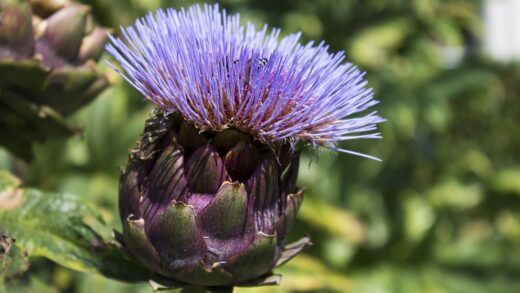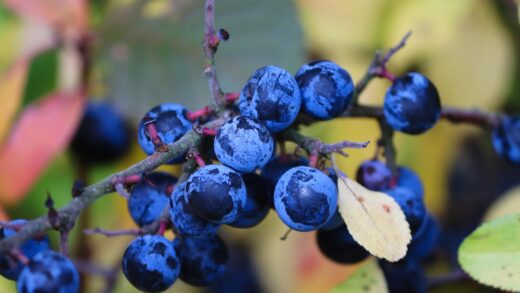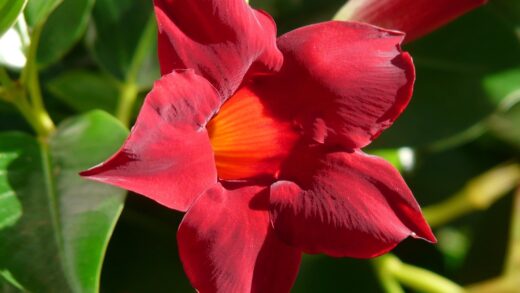Blue oat grass is a stunningly architectural ornamental grass, celebrated for its fine-textured, metallic blue foliage that forms a neat, rounded clump. Providing proper care for this plant is not overly demanding, as it is a resilient and relatively low-maintenance species once established in the right environment. The key to its success lies in mimicking its native Mediterranean habitat, which involves providing plenty of sunshine, excellent drainage, and lean soil conditions. Understanding these fundamental requirements is the first step toward cultivating a healthy and visually striking specimen that will enhance the garden landscape for years. Its beautiful form and color provide a wonderful contrast to broad-leaved perennials and flowering plants, making it a versatile choice for various design schemes.
Proper care begins with selecting an appropriate planting site, which is arguably the most critical factor for the long-term health of blue oat grass. This plant thrives in full sun, meaning it requires at least six to eight hours of direct sunlight each day to maintain its vibrant blue color and dense, mounded shape. Without adequate sunlight, the foliage tends to become leggy, less intensely colored, and the overall structure of the plant can become weak and floppy. It is therefore essential to choose a location that is not shaded by buildings, trees, or other taller plants throughout the majority of the day.
Once a sunny location is secured, the next consideration is the soil. Blue oat grass is exceptionally intolerant of wet, heavy soils, especially during the winter months, as this can lead to crown rot, a fatal condition for the plant. The ideal soil is sandy or loamy, with sharp and fast drainage. If you are working with heavy clay soil, it is imperative to amend it generously with organic compost, grit, or sand to improve its structure and porosity. This ensures that water drains away from the root zone quickly, preventing the roots from becoming waterlogged and susceptible to disease.
Beyond the initial setup, ongoing maintenance for blue oat grass is minimal, which is a significant part of its appeal to gardeners. It is a drought-tolerant species once its root system is well-established, requiring infrequent watering in most climates. Furthermore, it performs best in soil that is not overly fertile, so a regular fertilization schedule is unnecessary and can even be detrimental. The primary maintenance tasks involve an annual cutback to remove old foliage and encourage fresh growth, along with monitoring for the rare instances of pests or diseases.
Site selection and soil preparation
Choosing the perfect location is the cornerstone of successfully growing blue oat grass. This grass demands a position in full, direct sunlight to truly flourish and develop its signature steely-blue hue. Insufficient light will not only result in a washed-out, greenish color but also cause the plant to grow weak and leggy, losing its attractive, fountain-like habit. When scouting your garden for a suitable spot, observe the sun patterns throughout the day to ensure the chosen area receives at least six hours of uninterrupted sunlight. This commitment to providing ample light is the single most important decision you will make for the plant’s aesthetic appeal and vigor.
More articles on this topic
The nature of the soil is equally as critical as the amount of sunlight. Blue oat grass has a deep-rooted aversion to “wet feet,” meaning its roots cannot tolerate sitting in waterlogged soil. Excellent drainage is non-negotiable for its survival and long-term health. The ideal substrate is a sandy, gravelly, or light loam soil that allows water to pass through freely. Before planting, it is wise to test the drainage of your chosen spot by digging a hole and filling it with water; if it takes more than an hour to drain, the drainage is likely insufficient for this species.
If your garden is characterized by heavy clay or compacted soil, significant amendments will be necessary to create a hospitable environment for blue oat grass. To improve drainage and aeration, you must incorporate materials that create more space between soil particles. Generous amounts of coarse sand, fine gravel, or perlite should be thoroughly mixed into the native soil to a depth of at least 30 centimeters. Additionally, incorporating well-rotted compost can help improve the soil structure, but it should be used judiciously to avoid creating an overly rich medium.
The final aspect of soil preparation involves considering its fertility. Blue oat grass is adapted to lean soils and does not require a nutrient-rich environment to thrive. In fact, excessively fertile soil, particularly soil that is high in nitrogen, can promote lush, soft growth that is more susceptible to flopping and fungal diseases. Therefore, it is best to avoid adding rich manures or high-nitrogen fertilizers to the planting area. The goal is to create a lean, well-drained medium that encourages strong, resilient growth rather than rapid, weak foliage production.
Watering practices for establishment and maturity
Proper watering is crucial, especially during the plant’s first growing season as it works to establish a deep and extensive root system. For newly planted blue oat grass, a consistent watering schedule is necessary to help it settle into its new environment. You should water the plant deeply once or twice a week, depending on your climate and soil conditions, ensuring the soil is thoroughly moistened but not saturated. This initial period of regular watering is a temporary measure designed to support the plant until it becomes self-sufficient.
More articles on this topic
Once the blue oat grass has been in the ground for a full season and is well-established, its water needs decrease dramatically. The plant is exceptionally drought-tolerant and is much more likely to suffer from overwatering than from a lack of water. For mature plants, natural rainfall is often sufficient to meet their needs in many temperate climates. You should only intervene with supplemental irrigation during prolonged periods of extreme heat and drought, and even then, a deep soaking every few weeks is usually adequate.
The key to watering mature blue oat grass is to allow the soil to dry out completely between waterings. A good method to check for soil moisture is to insert your finger a few inches into the soil near the base of the plant. If the soil feels dry at this depth, it may be time to water. This approach prevents the constant soil moisture that can lead to root and crown rot, which is the most common reason for the decline of this ornamental grass. Always water at the base of the plant to keep the dense foliage as dry as possible.
It is also important to adjust your watering practices according to the season. The plant’s water requirements are highest during the active growing season of spring and early summer. As temperatures cool in the autumn, you should reduce the frequency of watering significantly to allow the plant to prepare for winter dormancy. During the winter, supplemental watering is almost never necessary, as the combination of cold temperatures and wet soil is a recipe for disaster for this particular species.
Nutritional needs and fertilization
One of the most appealing aspects of blue oat grass is its modest nutritional requirements. This plant is perfectly adapted to thrive in soils that are considered lean or of average fertility. It does not need a rich, heavily amended soil to produce its beautiful blue foliage; in fact, an excess of nutrients can lead to undesirable outcomes. Rich soils, particularly those high in nitrogen, tend to encourage rapid, soft, and floppy growth, which detracts from the plant’s structural integrity and its desirable clumping form. This can cause the grass to splay open from the center, creating an unsightly appearance.
Given its preference for lean conditions, a dedicated fertilization regimen is generally not recommended for blue oat grass. In most garden soils, the existing nutrients will be more than sufficient to support healthy growth throughout the year. Adding fertilizer is often an unnecessary step that can do more harm than good. If you have prepared your soil correctly by ensuring it is well-draining, you have already provided the primary foundation for a healthy plant. Focus your efforts on providing the right location and soil structure rather than on supplemental feeding.
There are, however, very specific circumstances where a light application of fertilizer might be considered. If your blue oat grass is planted in extremely poor, sandy soil that is nearly devoid of all organic matter, or if a soil test reveals a significant nutrient deficiency, a single, conservative feeding in the spring may be beneficial. In such cases, the best choice is a slow-release, balanced fertilizer with a low nitrogen content. A granular fertilizer formulated for perennials or grasses, applied at half the recommended rate, is a safe option.
Alternatively, a more natural and gentle approach to improving very poor soil is to apply a thin layer of well-rotted compost around the base of the plant in the early spring. This acts as a mild, slow-release nutrient source and also helps to improve soil structure over time without overwhelming the plant with an excessive dose of nitrogen. This method provides a subtle boost of organic matter and trace minerals, supporting steady and strong growth rather than the weak, leggy foliage that can result from synthetic fertilizers.
Pruning and seasonal maintenance
The primary maintenance task for ensuring your blue oat grass looks its best year after year is an annual pruning or “combing.” As a cool-season grass, it experiences its most active growth in the spring and fall. The foliage is semi-evergreen, meaning it may retain some of its color through milder winters but will often look tired and weathered by the time spring arrives. The main goal of pruning is to remove this old, damaged foliage to make way for the vibrant new growth that will emerge from the plant’s crown. This annual cleanup revitalizes the plant and maintains its tidy, attractive appearance.
The timing of this maintenance is critical for the health of the plant. The best time to cut back blue oat grass is in the late winter or very early spring, just before the new blades begin to emerge. Pruning too early in the winter can expose the plant’s crown to harsh weather, while waiting too long in the spring risks cutting off the tips of the new growth. A good rule of thumb is to perform the task when you see the very first signs of new green shoots appearing at the base of the clump.
There are two common methods for tidying up blue oat grass. The first, and more gentle, approach is to “comb” out the dead foliage using your hands (while wearing protective gloves) or a small rake. By gently pulling through the clump, the dead, straw-colored leaves will easily come away, leaving the healthier, more persistent foliage intact. This method is often sufficient in milder climates where the plant remains largely evergreen and only needs a light cleanup to look refreshed.
In colder climates, or for plants that have sustained significant winter damage, a harder pruning is often necessary. This involves cutting the entire clump back to a height of about 8 to 10 centimeters from the ground using sharp shears or hedge trimmers. While this may seem drastic, it is the most effective way to rejuvenate the plant and ensure that the new season’s growth is uniform and vigorous. This hard prune removes all of the previous year’s tired foliage, allowing the fresh, silvery-blue blades to emerge unimpeded, resulting in a perfectly formed and vibrant clump.
Pest and disease considerations
Blue oat grass is renowned for its excellent resistance to most common garden pests and diseases, making it a reliable and low-stress choice for many landscapes. Its tough, fibrous leaves are generally unappealing to grazing pests such as deer and rabbits, who tend to bypass it in favor of more tender plants. This natural resilience means that you will rarely need to intervene with chemical sprays or other pest control measures, contributing to a healthier and more eco-friendly garden environment. Its robust nature is one of its most significant assets for gardeners seeking low-maintenance plantings.
However, no plant is entirely immune to problems, and the most significant threat to blue oat grass is not a pest but a disease caused by improper environmental conditions. Crown and root rot are the most common ailments, and they are almost always the result of a plant being situated in poorly drained, heavy soil that remains wet for extended periods, particularly during winter dormancy. The symptoms include a yellowing or browning of the foliage, a mushy crown at the base of the plant, and a general lack of vigor. Unfortunately, once rot has set in, it is very difficult to reverse, which underscores the supreme importance of providing excellent drainage from the outset.
On rare occasions, particularly during prolonged periods of humid and wet weather, blue oat grass can be susceptible to fungal diseases such as rust. Rust appears as small, orange-brown pustules on the blades of the grass, and while it is typically not fatal, it can detract from the plant’s ornamental value. To manage rust, ensure there is good air circulation around the plant by not overcrowding it with other perennials. If you notice signs of rust, it can be helpful to remove the most affected leaves and avoid overhead watering to keep the foliage as dry as possible.
Proactive care is the best defense against potential health issues for blue oat grass. The most effective strategy is to focus on prevention rather than treatment. This involves siting the plant in full sun to help keep the foliage dry, ensuring the soil is amended for sharp drainage to prevent rot, and providing adequate spacing between plants to promote good airflow. By meeting these fundamental cultural requirements, you create an environment where the plant can thrive and its natural defenses against pests and diseases are at their strongest.
📷: Drew Avery, CC BY 2.0, via Wikimedia Commons


















